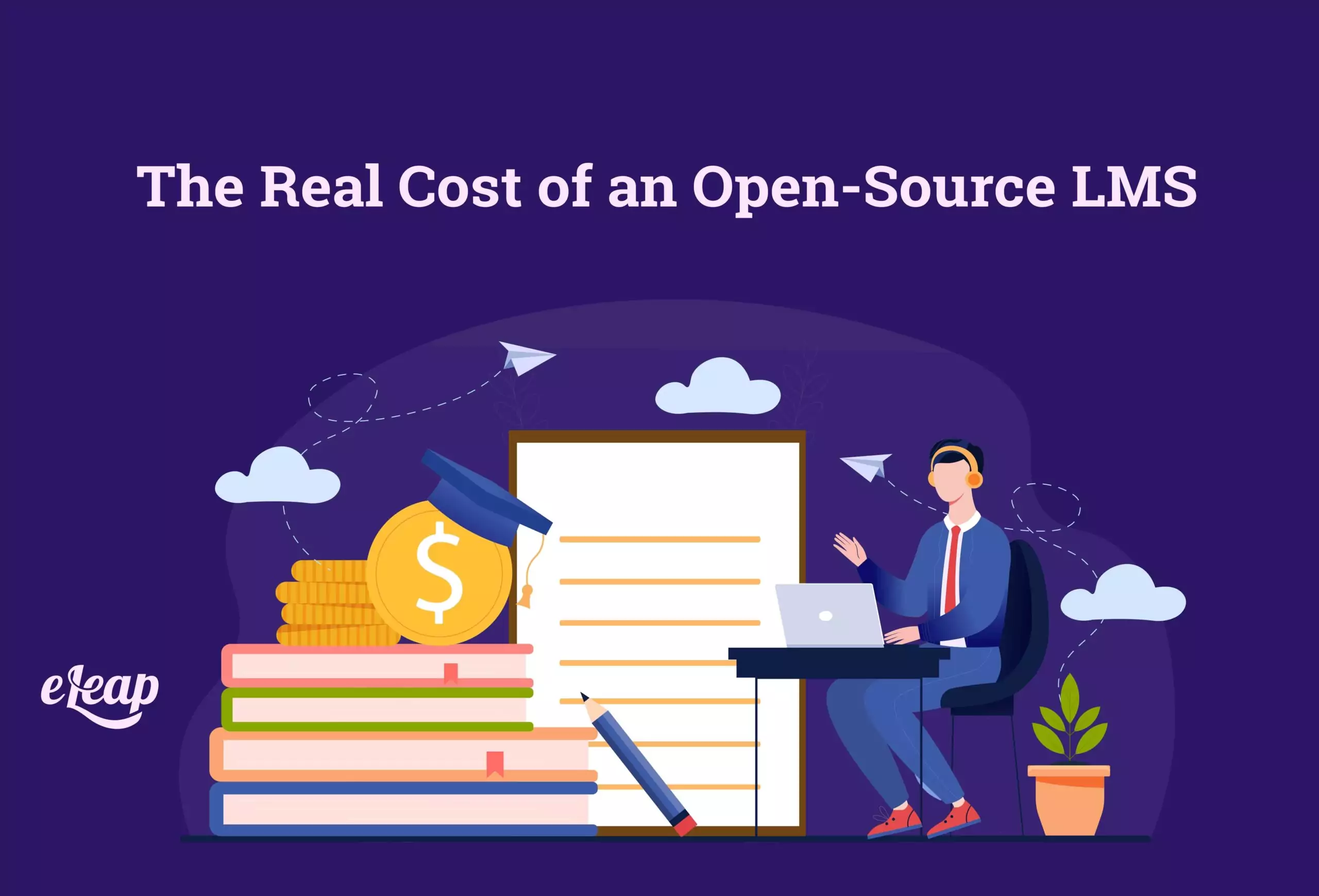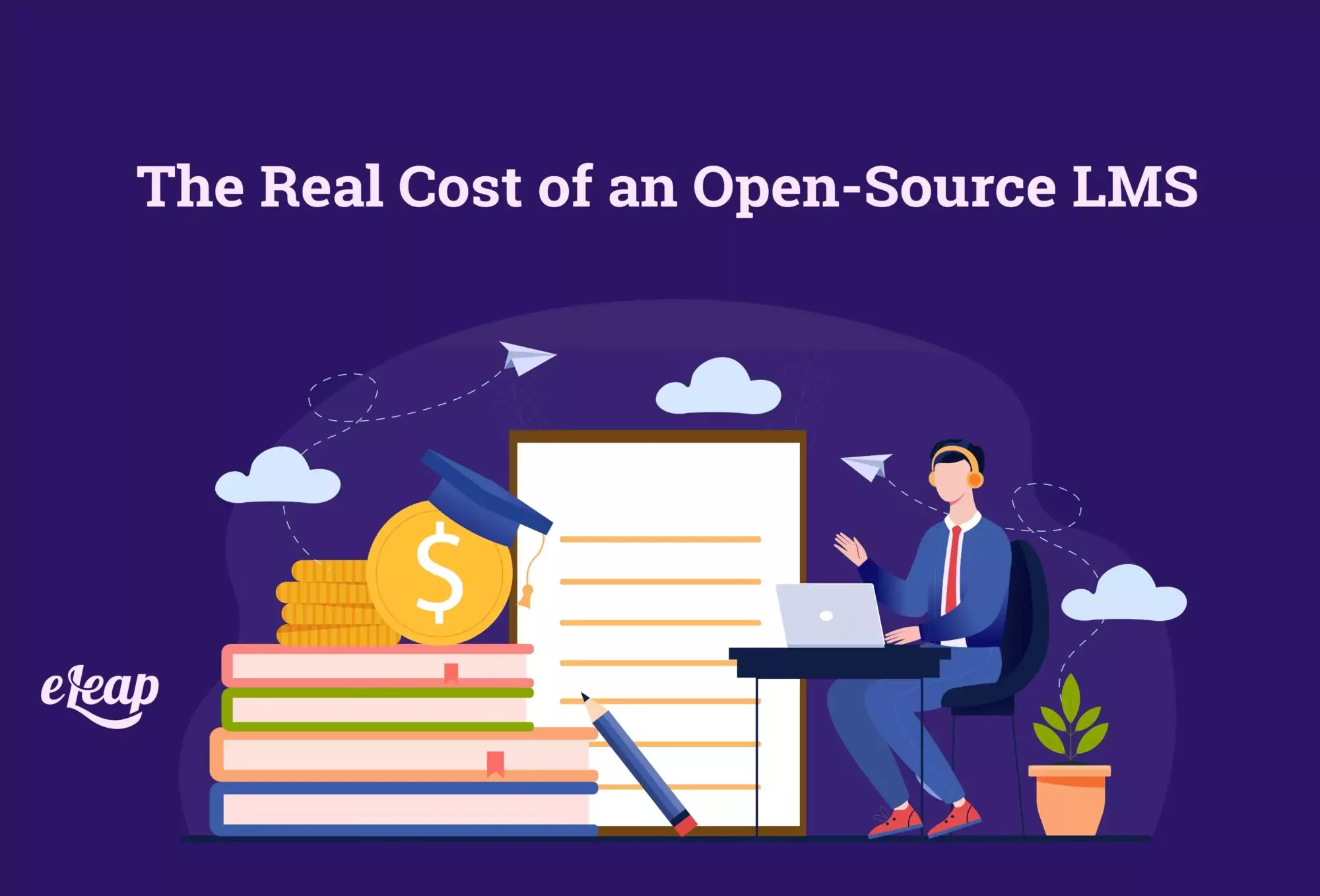The Real Cost of an Open-Source LMS

The biggest selling point of open-source tools is that they’re free to access, for anyone, for any need. They often have more integrations and fewer limitations, which also makes them quite appealing. They’re part of what’s known as the sandbox family of software and can be built and scaled to all kinds of different organizational needs. Of course, the caveat is that these “free” LMS platforms are only free to access. Actually implementing them and utilizing them as your primary L&D interface could actually become costlier than you think.

Risk 1: Hidden Fees and Costs
Some open-source platforms include extras for users, but those may come at a cost. Even worse, some learning management systems will be less-than-transparent about the fees and costs associated with premium services from them. Many people love the idea that they get a free tool, but it’s only “free” if you’re not restricted by any additional costs, fees, or hidden charges that come from utilizing the specific platform that you choose.
Risk 2: You Might Need an IT Team
Open-source software is great, but it also requires a dedicated technology professional or team to execute effectively. If you don’t have an IT team in-house, you may need to hire one to handle the server migration, LMS setup, and other features. Usually, an IT company will charge around $4,000 for server setup and validation. You may also find other developers or IT pros that can offer assistance at a cheaper rate, but make sure that the service they provide is useful and accurate, first and foremost.
IT teams know the ins and outs of integrating open-source platforms. They also know how to evaluate the process and help you determine what’s going to be right for your organizational needs. An IT vendor with expertise in LMS platforms will prove to be an invaluable asset, so don’t forget to add them to your list.
Risk 3: You Will Also Need Developers to Create Content
Speaking of developers, your LMS needs people to put the content in place. Some systems come filled with pre-fabricated, customizable content that you can tweak to fit your needs. Even then, however, you’ll still need to create value-added content for your learning management system. That includes training modules, videos, self-paced courses, etc. Some organizations even hire people to develop a blog for their internal team, along with manuals, technical guides, and so forth.
Unless you happen to be a whiz at course creation in the eLearning arena, it’s going to be critical that you have someone who can help you create the perfect courses. Or, you could always choose to invest in a hosted LMS that comes with a provider that will ensure that you have all the right tools and people to create the perfect system. Don’t rely on yourself or your team to fill the LMS with valuable resources and information—make sure that you have professional assistance for the best results.
Risk 4: Don’t Forget about the Server Investment
You’re going to need a server where you can put this LMS, too. The configuration that you choose depends on users, usage patterns, and other data that can be quite difficult to predict in many cases. The server will need to have the means to operate for a few years without much attention or maintenance. If you choose a cheap server that needs to be upgraded sooner, you’ll spend more on these recurring costs than you want.
Not only that, but you may need different servers or types of platforms that need to be designed and implemented by an IT professional. We mentioned their services above, and that they can get quite costly. Make certain that you can afford the investment in servers and IT staff to manage your open-source LMS migration and implementation, or it’s not going to matter how “free” the platform was in the first place.
Risk 5: Customization Can Get Expensive
Sure, an open-source LMS is free. At first. However, if you’re like most organizations today, you will want to customize the interface, content, and other aspects of the platform. As mentioned above, IT pros and eLearning developers are going to be part of the budget here. You’ll also be spending time on strategy with your teams, taking away from the rest of the work that you need to do. Customization is great because it gives you the chance to create the perfect solution for your organization, but it comes at a price.
Meanwhile, companies that invest in a hosted LMS provider like eLeaP will find that customization is just part of the process. It’s included because it’s understood that every company needs a dedicated, branded eLearning resource that can give their employees that sense of belonging and connection that they deserve. It will streamline training and development opportunities and give you the chance to get more for less.
The Reality is Startling, But It’s Not the End of the World
What organizations find out through this process, usually, is that they can afford more than they realize in terms of their LMS and other developmental training tools. Therefore, they may choose to invest in a dedicated LMS provider that can help them set up and execute a custom LMS platform that is agile, scalable, and designed to deliver the learning and training needs of every employee and role within the organization.
When you choose the right LMS provider, you’ll find an affordable solution that is less work for you and still doesn’t break your budget. Open-source tools are great for some uses, but in this case, it’s far better to invest in a better system from the start. That’s where hosted solutions come into play—you’ll still get all the customization and attention to detail that you need, but at a fraction of the cost of hiring someone different for every job.
Before you hop on the open-source bandwagon just because of the word “free,” think about the real cost involved here. In most cases, companies will choose to go another route and invest in the most cost-effective solution with a dedicated LMS provider like eLeaP.